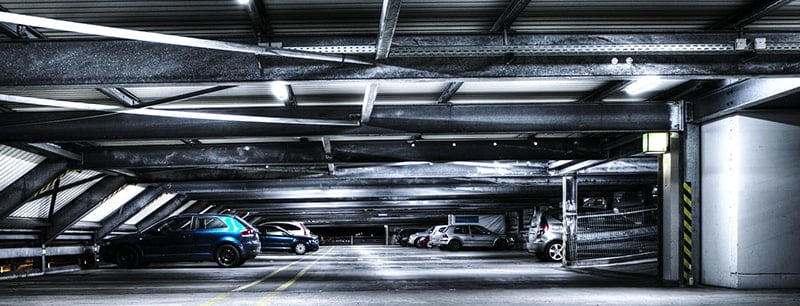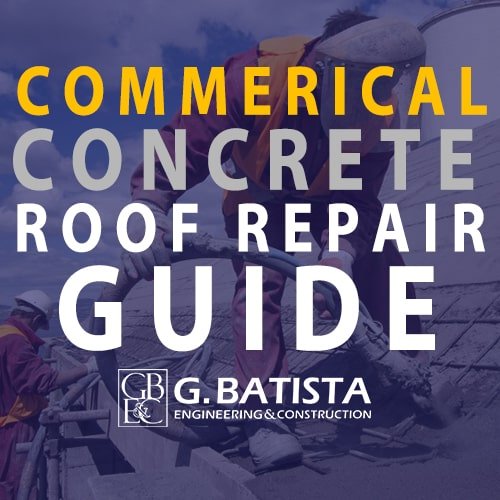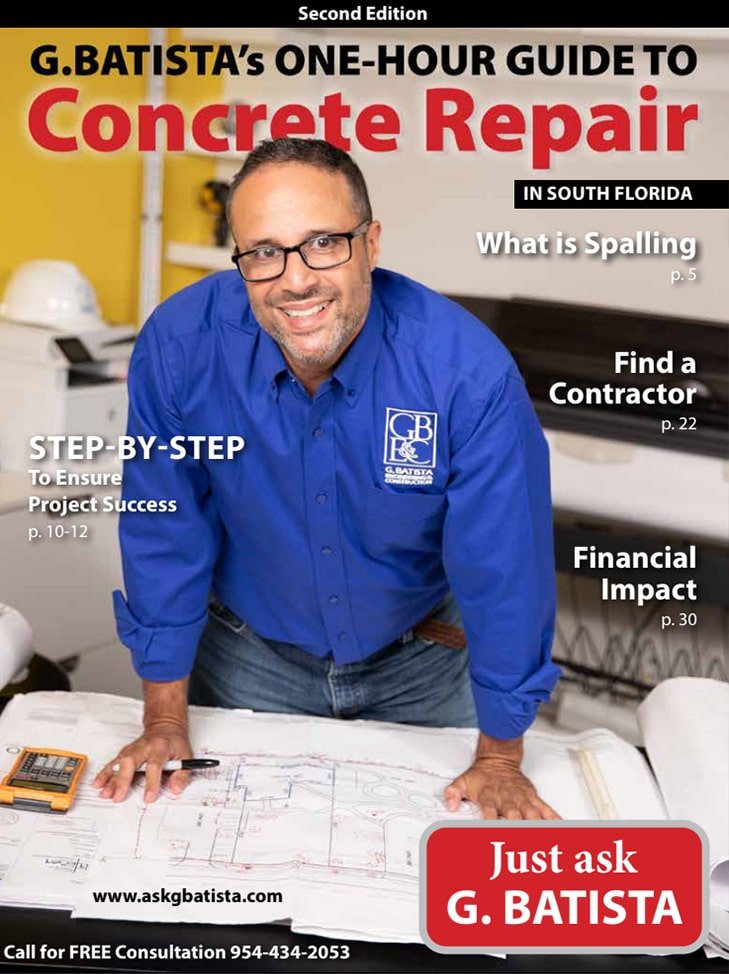
Concrete Repairs on Parking Garage Structures
When it comes to parking garage repair or concrete parking lot repair, there are a few important points to consider. Parking garages are very distinct structures from all the other structures out in the world. These structures have large beams and columns and thick slabs that are designed to withstand the daily weight of thousands of heavy vehicles. Furthermore, the vast majority of concrete parking lot structures are open which means that they are in direct contact with the open air.
The weather and chlorides that are present in the air can lead to long-term effects on the concrete. Due to the aforementioned, owners of concrete parking structures should take special care in parking garage maintenance and in monitoring the state of their structure. Naturally, timely corrective measures significantly add to the longevity of structures.
Cracks on your concrete parking structure
Cracks on concrete appear due to many different reasons. These reasons range from pouring a bad batch of concrete, to corrosion and improper curing during the construction process. In other words, it’s those cracks that are caused by the constant movement, expansion, and contraction of the structure and the vehicle traffic.
If you are in a parking garage and you stand still while cars are passing by, you will likely feel yourself vibrating. Of course, this is normal and you shouldn’t be alarmed. The heat and cold cycles of day and night cause the structure to expand and contract. All these items come together to cause fissures in the concrete on a long-term basis. It is normal for the surface of a concrete parking structure to contain cracks. Small cracks typically do not constitute a serious structural problem although a review by a structural engineer is always recommended.
In any event, any type of crack should be filled at a minimum. Your structural engineer will be the person who determines which cracks are serious and which are not. Additionally, the engineer will be the professional who will not only quantify the amount of cracking but will also provide you with the best method and cost of repair.
Needless to say, engineers have the training and the experience to provide you with guidance on dealing with cracks. Furthermore, it is beyond the scope of this blog to instruct the regular layperson on the ins and outs of analyzing a structure.
Concrete spalls on your parking garage
As mentioned above, cracks can pose an immediate serious threat to the structural integrity of the parking structure. However, cracks can also cause long-term damage to the parking deck structure in the form of spalling. This spalling occurs when chlorides seep into the concrete and cause the reinforcing steel inside the concrete to rust, expand, and then rupture the concrete.
You can read more on our Concrete Spalling Guide. This is of particular note in a parking structure that is not only open to the elements but also contains cracks where these salt chlorides can easily access the reinforcing steel and make it rust.
Damage to beams
Parking structures tend to have wide-open spaces. Engineers design parking structures to have as few columns as possible to avoid any collisions with automobiles. This means that the engineers must design long beams that span from column to column. As you might have guessed, the longer the beam, the more stress it takes from the vehicles driving over it. At times, these beams show outward signs of stress by sagging and cracking.
Concrete beams are critical structural elements in a parking garage. If you see widespread cracking on a beam, do not hesitate to contact a local structural engineer to inspect it. Depending on the size, location, and direction of the crack, it could be a tell-tale sign that there is a serious structural failure lurking.
Other types of repairs
If I were to provide a comprehensive list of all the issues that can arise in a concrete parking structure, this blog would be many more pages long. Cracking and spalling are by far the most prevalent issues in a concrete parking garage. To further illustrate, several other types of repairs are typical and these are as follows:
Water intrusion
Although parking garages are open structures, we still like to walk to our car without getting wet while we are still inside the structure. If cracks are large, they will let water seep down into the walls and concrete slab and the water will eventually find its way downward by the force of gravity. Water that goes through concrete picks up chemicals that can consequently damage the nice paint job on your car.
Furthermore, parking structures also have construction joints and caulk joints that can fail. If these joints are not properly maintained, they can also fail and cause leaking of water into the interior floor of the structure. Water can cause concrete degradation over time, therefore to avoid costly parking garage repairs, it’s best to perform regular maintenance and prevent water infiltration.
Garage Repairs can escalate for a lot of reasons but water damage is especially harmful when the structure is using reinforcing steel beams commonly referred to as rebar. These steel beams are susceptible to rust and can cause concrete spalling, weakening the structural elements that keep your parking garage standing.
Rusting steel connection plates
Some parking structures are what we call “pre-cast” where many concrete pieces are brought in and welded together in the field. Each one of these concrete pieces has an “embed” which is a small steel plate where the different pieces make contact and where the welders make the connections to build the structure. These embeds can rust and sometimes fail.
Needless to say, these failures can lead to catastrophic problems and even collapses. Although collapses are rare, the owners of these structures should be vigilant and have a professional structural engineer make periodic inspections on the embeds.
Importance of parking garage maintenance
In conclusion, parking structures are very unique types of structures. They are constantly exposed to the ravages of the weather. Also, they are subjected to extraordinary stresses from the vehicles that day-in and day-out travel through it.
Eventually, failures in the form of cracking and spalling will appear on parking decks, and it is up to the owner of the parking structure and parking garage to ensure that a maintenance regimen is applied to identify these anomalies and cure them. As mentioned above, a structural engineer is your best line of defense in guiding proper maintenance so your concrete parking garage can avoid corrosion, deterioration, and long-term effects of damage.
This guidance is in the form of an inspection to identify any cracking and spalling that has occurred. This professional can also help you in your project by providing you with plans, specifications, and a protocol to perform these repairs.
Engineers who specialize in concrete repair, such as G. Batista & Associates, can guide you through the entire process. This includes obtaining a suitable contractor to perform the repairs. If you do not maintain your parking garage properly you will have to deal with more parking lot repairs then you anticipated.




